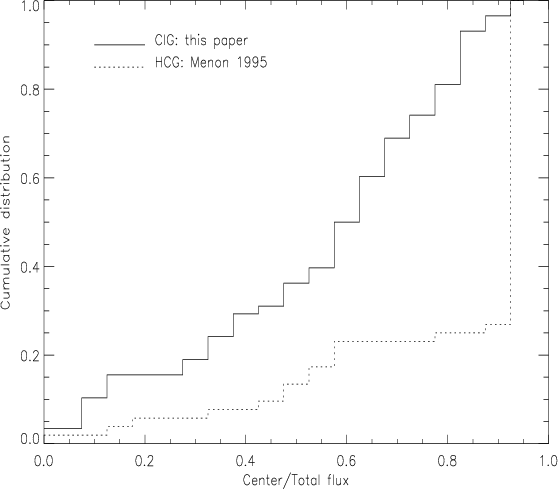Scientific Results
- Positions for CIG galaxies
- Redshift and distances
- Morphologies
- Isolation
- A catalogue of neighbours around isolated galaxies based on POSS I & II images
- Quantification of isolation based on POSS I & II images
- Revision of isolation criteria using the SDSS
- Effects of the environment on galaxies in the..
- Catalogues of isolated galaxies, isolated pairs, and isolated triplets..
- Star formation
- Optical specialization
- Radio continuum properties
- Atomic gas
- Isolated Galaxies
- Environment and faint features of CIG 96: deep optical and HI observations (2018)
- Atomic gas scaling relations (2018)
- A ∼12 kpc HI extension and other HI asymmetries in the isolated galaxy CIG 340 (2014)
- HI asymmetry in the isolated galaxy CIG 85 (2012)
- HI asymmetries in the isolated galaxy CIG 292 (2011)
- Asymmetries in isolated galaxies (2011)
- The large asymmetric HI envelope of CIG 96 (2005)
- Compact groups
- Studies of complementary samples
- Isolated Galaxies
- Molecular gas
- Nuclear activity
Radio continuum properties
Radio continuum emission from galaxies is unaffected by dust extinction. Such data provides a transparent window for studying star formation, active nuclei and possible shock processes. We are analysing the radio continuum emission properties for the CIG as a sample of galaxies where evolution has been driven by internal rather than external forces (i.e. nature vs. nurture). The combination of AMIGA and sensitive existing radio survey at different wavelengths offer the possibility to characterize the radio continuum properties of the most isolated galaxies in the local Universe and to interprete results of deeper higher redshift surveys.
The study of the radio properties of the AMIGA sample is intended to characterize the radio continuum emission for a sample least affected by the local environment, thus providing a reference against which less isolated and interacting samples can be compared. Radio continuum data at 325, 1420, and 4850 MHz were extracted from the WENSS, NVSS/FIRST, and GB6 surveys, respectively. The source extractions have been obtained from reprocessing the data and new detections added to the cross-matched detections with the respective survey catalogs. We focus on the complete AMIGA subsample composed of 719 galaxies.
Comparison between the NVSS and FIRST detections indicates that the radio continuum is coming from disk-dominated emission in spiral galaxies, in contrast to the results found in high-density environments where nuclear activity is more frequent (see the next figure).
Fig. 1 Figure showing the cumulative distribution of the FIRST/NVSS flux ratio for the isolated galaxies of the AMIGA sample (solid line) and the center/total flux ratio (dotted line) for a sample of galaxies in Hickson compact groups from Menon (1995).
The comparison of the radio continuum power with a comparable sample, which is however not selected with respect to its environment, the Condon et al. UGC-SF sample of starforming field galaxies, shows a lower mean value for the AMIGA sample. We have obtained radio-to-optical flux ratios (R) using the NVSS radio continuum flux. The distribution of R for the AMIGA galaxies is consistent with a sample dominated by radio emission from star formation (SF) and a small number of active galactic nuclei (AGN), with less than 3% of the sample with R > 100. We derived the radio luminosity function (RLF) and total power density of the radio continuum emission for the AMIGA sample at 1.4 GHz, and compared them with results from other low-redshift studies. The Schechter fit of the RLF indicates a major weight of the low-luminosity galaxies.
The results indicate the very low level of radio continuum emission in our sample of isolated galaxies, which is dominated by mild disk SF. It confirms thus the AMIGA sample as a suitable template to effectively quantify the role of interactions in samples extracted from denser environments.


